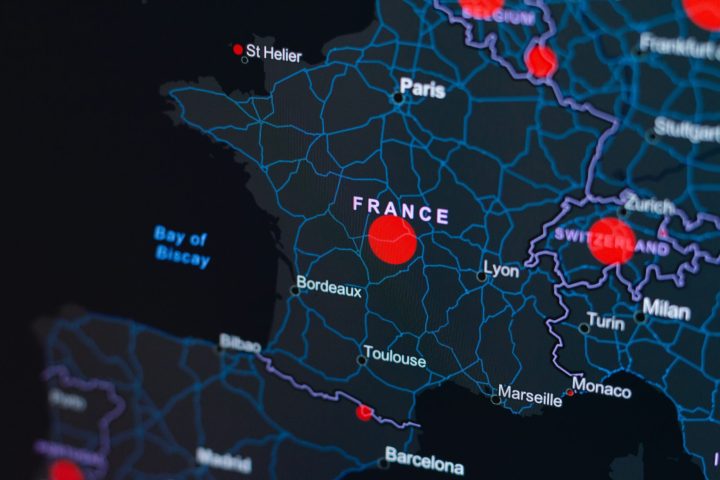Europe top 1000 retailers, DTC brands, and marketplaces [The RetailX 360° Report]
Written by
Kinga EdwardsPublished on
Discover the RetailX 360° Report, your comprehensive guide to the top 1000 retailers, DTC brands, and marketplaces across Europe. Read our article and stay informed.
![Europe Top 1000 Retailers, DTC Brands, and Marketplaces [RetailX 360° Report]](https://ecommercegermany.com/wp-content/uploads/2024/09/lucrezia-carnelos-wQ9VuP_Njr4-unsplash-scaled-1.jpg)
Europe is a continent rich in history, culture, and diversity. Here, you will see everything: from bustling cities in Western Europe to emerging markets in Eastern Europe.
But what about Europe’s retail landscape?
Recent events in politics and economics haven’t gone without impact. Operating in this market has become a challenge, but there are some brands that are doing well despite the difficulties.
We will analyze them thanks to the RetailX Europe Top 1000 report.
We will also take a closer look at Europe and its regions and learn about consumer behavior. There’s a lot ahead of us, so let’s get started.
P.S. To see all the data, insights, and retailers from the list, you can download the Europe Top1000 report here.
Strategic overview
Europe has been experiencing quite a whirlwind of political and economic changes in recent years.
Russia’s invasion of Ukraine, coupled with rising energy prices and inflation, has impacted the region’s retail. The ongoing war has created a sense of uncertainty that ripples through economies and politics alike. As a result, consumer spending habits have changed – while Europeans continue to spend more on essentials, their discretionary spending has been somewhat curtailed.
Speaking of politics, the European Parliament elections in June 2024 brought about some interesting shifts. The center-right European People’s Party took the most votes, followed by the Progressive Alliance of Socialists and Democrats. Also, a significant political change occurred in the UK as the Labour Party ousted the Conservatives after a 14-year reign. This political landscape has implications for the economy and, consequently, retail.
But, despite political developments, there are signs of economic stabilization in Europe. Inflation rates are gradually decreasing, and interest rates are beginning to fall.
To understand the potential attractiveness of different European regions for retailers, we need to consider some key factors. Among them are:
Population: Europe has a relatively stable population of around 526.2 million, with a large portion aged 59 and above. However, there’s a growing proportion of younger generations, particularly Millennials and Gen Z, who are increasingly digital-savvy and active consumers.
Source: Europe Top1000 360°, the RetailX report 2024.
GDP: Economic indicators such as GDP per capita provide insights into disposable income levels and consumer spending power. Western Europe generally has a higher GDP per capita compared to other regions, which indicates greater purchasing potential.
Source: Europe Top1000 360°, the RetailX report 2024.
Internet usage: High internet penetration is essential for retailers targeting European consumers. The region boasts impressive internet usage rates, with over 90% of the population regularly going online.
Source: Europe Top1000 360°, the RetailX report 2024.
Furthermore, retailers who want to sell on the web in Europe should keep in mind that mobile devices are one of the trends shaping the online market.
Smartphones and tablets allow consumers to shop anytime, anywhere. Retailers must ensure their websites and apps are optimized for mobile to cater to this growing segment of shoppers. Social media platforms are also vital in influencing consumer behavior and driving digital sales. Platforms like Instagram, Facebook, and TikTok let retailers engage with target audiences, showcase products, and generate brand awareness. Furthermore, the rise of e-commerce marketplaces has transformed the way consumers shop. For instance, Amazon, eBay, and Zalando offer thousands of products from various sellers.
However, the growth of online shopping has also led to challenges such as returns, fraud, and delivery delays. Retailers must implement efficient logistics and customer service strategies to address these issues and ensure a positive experience.
So, the European retail scene is a complex interplay of political factors, economic conditions, online changes, and consumer behavior. As we explore Europe’s top 1000 retailers, DTC brands, and marketplaces, we’ll delve deeper into the specific challenges and opportunities these businesses face!
The RetailX Europe Top1000 2024
Now, let’s examine the businesses that make up the RetailX Europe Top1000 2024.
This prestigious list is a snapshot of Europe’s leading retailers, DTC brands, and marketplaces. While most of these firms are headquartered within the region (88%), there are also international players (12%).
43% of the list is devoted to retailers, followed by 31% to brands, and 26% to marketplaces. What’s interesting is the distribution of traffic across these businesses.
- Marketplaces like Amazon and eBay attract 42% of European consumer traffic and reflect their ability to offer many products and brands under one roof.
- Brands attract 48% of European consumer traffic. They present unique offerings and build direct relationships with consumers.
- While still vital, retailers tend to have a smaller share of online traffic (10%).
Regarding product categories, fashion reigns supreme, followed by consumer electronics and multi-sector retail. These areas are particularly competitive and in high demand among European shoppers.
In the top 1000 list, we can distinguish categories like Elite, Leading, Top50, Top100, Top150, Top250, Top350, Top500, and Top1000.
What sets apart the Elite and Leading businesses from the rest?
It’s a combination of factors, including:
- size,
- financial performance,
- online presence,
- and a strong focus on customer needs.
These companies are at the forefront of industry trends as they offer innovative products and services.
Here’s the list of top 100 businesses:
Source: Europe Top1000 360°, the RetailX report 2024.
Let’s look at some of the standout companies in the Elite and Leading categories.
The Elite category features Apple. As a result of its iconic products and seamless digital ecosystem, it has consistently held a prominent position in the market. Argos, a UK-based retailer, has demonstrated its ability to adapt to changing consumer preferences through its convenient multichannel approach. H&M and Ikea, both known for their affordable products and sustainable practices, have also earned their place among the elite.
The Leading category includes supermarkets, fashion brands, and consumer electronics retailers like ALDI, Amazon, Lidl, and Decathlon. These companies have proven their ability to deliver value and meet the needs of their customers in a competitive market.
In the Top50 category, we can find Bershka, Douglas, Empik, HP, Tchibo, Stradivarius, Vans, and more. These well-known brands are important in everyday life, and easy access to them through online shopping only works to their advantage.
Let’s not forget about the Top100 category, with brands, retailers, and marketplaces like ADIDAS, DM, Sephora, LEGO, TESCO, etc. They are among the most influential stores in Europe and have a strong customer base.
Other names on the list include:
Source: Europe Top1000 360°, the RetailX report 2024.
Source: Europe Top1000 360°, the RetailX report 2024.
Source: Europe Top1000 360°, the RetailX report 2024.
Check out all the retailers, DTC brands, and marketplaces from the list by downloading the Europe Top1000 report.
Expert insight: How can the top retailers maximize their value?
Mike Richmond, the VP of Sales at Blue Yonder, points out that returns are often seen as a cost center – a source of unnecessary expenses, delays, uncertainty, waste, and customer dissatisfaction. However, retailers can take another approach to them. To increase profits and boost satisfaction, they can consider returns as an opportunity to maximize value. For example, use returns to strengthen customer relationships. Instead of a one-size-fits-all approach, bet on a system that tailors the process to each customer and item. Here, high-value customers wouldn’t wait as long for refunds. Valuable seasonal items could be quickly restocked, while damaged goods would be efficiently channeled for repairs or outlet sales.
So, the solution lies in intelligent returns, but this requires a complete rethink.
Leverage data and automation to make smarter decisions about every return. As a result, you will improve customer satisfaction and boost profitability.
Overview of Europe’s regions
Europe is divided into five distinct regions: Western, Northern, Central, Southern, and Eastern. Take a look at how each region’s retail area is shaped by its unique characteristics.
Western Europe
Source: Europe Top1000 360°, the RetailX report 2024.
Area: 1,295,227 km2
Official languages: Dutch, English, French, German, Irish, Luxembourgish, Welsh,
Foreign languages spoken: Danish, Frisian, Portuguese, Romani, Sorbian
Average VAT: 20.1%
Average reduced rate: 5.1%
Its economic affluence and cultural vibrancy characterize Western Europe. Countries such as France, Germany, the United Kingdom, and Italy have long been at the forefront of European development. Despite a slight decline in population in 2023, the previous four years saw the population growing slowly.
Unemployment levels are low, and GDP per capita is high. This economic prosperity has contributed to a strong consumer base and robust retail market. While inflation rates have risen recently, the region’s overall economic resilience has mitigated the impact.
Source: Europe Top1000 360°, the RetailX report 2024.
The GDP gap between the region and the continent as a whole has continued to widen over the past five years. Europe’s GDP in 2015 was 46.9k, €8.9k lower than Western Europe’s. The gap increased to €11.1k by 2023.
Northern Europe
Source: Europe Top1000 360°, the RetailX report 2024.
Area: 1,732,242 km2
Official languages: Bokmal Norwegian, Danish, Estonian, Faroese, Finnish, Icelandic, Latvian, Lithuanian, Nynorsk Norwegian, Swedish,
Foreign languages spoken: English, Greenlandic, Nordic languages, Russian
Average VAT: 23.1%
Average reduced rate: 5.9%
Northern Europe, characterized by its stunning landscapes and high standards of living, is also a digital powerhouse. In terms of the region’s demographic structure, Millennials, Gen Z, and Baby Boomers make up almost equal shares of the population – each making up around 25% of the 33.4 million people.
High Internet penetration in Northern Europe is driving e-commerce growth. Estonia, in particular, has become a digital leader and has witnessed fast growth in online sales. Despite inflationary pressures, especially in the Baltic states, Northern Europe’s strong GDP per capita supports consumer spending. While inflation rates have temporarily risen, they are expected to stabilize.
Source: Europe Top1000 360°, the RetailX report 2024.
Unemployment rates in the region have fluctuated in recent years, but overall, Northern Europe maintains a relatively low rate compared to the European average.
Central Europe
Source: Europe Top1000 360°, the RetailX report 2024.
Area: 679,290 km2
Official languages: Czech, French, German, Hungarian, Italian, Polish, Slovak, Slovene
Foreign languages spoken: English, German, Russian
Average VAT: 20.1%
Average reduced rate: 6.8%
One of the standout features of Central Europe is the high percentage of Millennials within its population. This demographic, known for its digital savviness and consumer-centric mindset, offers significant potential for retailers.
Source: Europe Top1000 360°, the RetailX report 2024.
E-commerce penetration has traditionally been lower compared to other parts of Europe. What’s the opportunity? For retailers looking to expand their online presence, countries like Hungary and Czechia offer untapped markets.
GDP per capita has steadily increased, but the region has not been immune to economic challenges. Inflationary pressures affect consumer spending and economic growth, especially in countries like Hungary. This leads to dissatisfied consumers and companies, which, after all, have to raise prices to protect themselves.
Southern Europe
Source: Europe Top1000 360°, the RetailX report 2024.
Area: 1,041,798 km2
Official languages: Basque, Catalan, English, Galician, Greek, Italian, Maltese, Mirandese, Portuguese, Spanish, Turkish
Foreign languages spoken: French, German, Slovene
Average VAT: 21.2%
Average reduced rate: 4.2%
In Southern Europe, a large percentage of the population belongs to the GenX and Baby Boomer generations. Even with a population decline, this region has witnessed a steady increase in internet usage. Digital transformation has opened up new opportunities for retailers to reach consumers online.
Source: Europe Top1000 360°, the RetailX report 2024.
While GDP per capita remains below the European average, the region has grown in recent years. Countries like Spain, Italy, Portugal, and Greece have collectively added value to their economies. Spain, in particular, has experienced robust economic progress. It’s driven by factors such as strong domestic consumption, tourism, and a healthy labor market.
The country’s positive economic outlook has attracted increased investment and attention from market analysts.
Eastern Europe
Source: Europe Top1000 360°, the RetailX report 2024.
Area: 1,151,720 km2
Official languages: Albanian, Bulgarian, Croatia, Macedonian, Romanian, Serbian, Ukrainian
Foreign languages spoken: Turkish, Russian
Average VAT: 20.3%
Average reduced rate: 5.3%
As a result of the ongoing conflict in Ukraine, Eastern Europe faces enormous difficulties. The war has had a devastating effect on both Ukraine and its neighboring countries. GDP per capita is lower than the European average. On the other hand, unemployment is high and stands at 7.41% in 2023.
Source: Europe Top1000 360°, the RetailX report 2024.
Inflation has been a major concern, particularly in the aftermath of the war. While inflation rates have begun to decline, they are still high compared to other regions. However, Eastern Europe also includes countries like Romania and Croatia – they expected positive economic growth in 2024.
The demographic landscape of Eastern Europe is dominated by GenX, a generation that has undergone profound social and economic changes. The region has also faced population declines in recent years, which can impact the economy and the consumer market.
Market focus: Germany
Germany has Europe’s largest economy and second-most populous country. Its per capita GDP remains below the Western European average. Demographics heavily influence Germany’s retail landscape. The country’s population is aging, with Baby Boomers making up the largest demographic group. As a result of this trend, retailers must adapt to the changing needs and preferences of older consumers while also targeting younger generations.
Source: Europe Top1000 360°, the RetailX report 2024.
The country has maintained a relatively low unemployment rate, but inflation has risen over the past few years and affects consumer spending. The Russia-Ukraine conflict has also contributed to increased energy prices and economic uncertainty.
Source: Europe Top1000 360°, the RetailX report 2024.
Fortunately, despite these challenges, Germany’s strong economic foundation makes it an attractive destination for retailers. Those companies that can successfully adapt to changing consumer needs and capitalize on the country’s strengths will have an advantage.
Customer view
Have you ever wondered why European customers choose to shop online instead of heading to their local stores? Well, it turns out there are several compelling reasons.
One of them is convenience. Many shoppers appreciate the ability to shop from the comfort of their homes. They can avoid the hassle of traffic and crowded stores. According to the survey, 50% of UK buyers cite home delivery as a top reason for ordering from the internet.
Source: Europe Top1000 360°, the RetailX report 2024.
Online shopping decisions are also heavily influenced by price. 49% of respondents from Germany stated that cheaper prices are a major reason for buying through the web, as they can often find better deals and a wider range of options than traditional brick-and-mortar stores. This is particularly important for price-conscious consumers.
Source: Europe Top1000 360°, the RetailX report 2024.
Saving time and a wider selection are other reasons. 47% of French customers value the time-saving aspect of online shopping, while 36% of Scandinavians appreciate the wider selection of products available via the internet. With access to vast options, people can easily compare different brands, models, and features to find the best product for their needs.
Source: Europe Top1000 360°, the RetailX report 2024.
Product reviews and information are also valuable resources for e-shoppers. 19% of French respondents stated that reading reviews and comparing product specifications is crucial to their online purchasing decisions. Finally, more product information is a major draw for 13% of Benelux consumers.
Source: Europe Top1000 360°, the RetailX report 2024.
So, what can retailers learn from these insights?
With a clear understanding of what motivates e-shoppers, they can optimize their online platforms, offer competitive pricing, provide excellent customer service, and create a seamless shopping experience.
The role of the European Union in e-commerce
Let’s also find out the role of the European Union in e-commerce. After all, through its various initiatives and regulations, the EU aims to create a level playing field for businesses and protect the rights of consumers from 27 countries.
One of the EU’s main goals is to remove barriers to cross-border trade. For example, by eliminating geoblocking websites, which prevents consumers from accessing online content or services from other EU countries. The EU has also worked to reduce the costs of cross-border delivery, to help businesses to sell their products across the region.
Another priority for the EU is to ensure that digital technologies benefit all its residents.
The 2030 Digital Decade program provides a framework for guiding digital policy and promoting innovation. The EU is investing in digital infrastructure, such as 5G networks and fiber connectivity, to guarantee all citizens have access to high-speed internet. A further target is that by 2030, 80% of those aged 16 to 74 will have at least basic digital skills.
The EU is also taking steps to protect consumers and fair competition. Regulations like the General Data Protection Regulation (GDPR) safeguard consumer data, while competition law prevents anti-competitive practices. Furthermore, they want to protect consumers from unfair treatment when shopping on the internet. These, for example, provide shoppers with a 14-day cooling-off period for online purchases, as well as a two-year warranty.
Conclusion
And there you have it! A comprehensive overview of the European retail landscape, from the top 1000 businesses to the broader economic and political factors shaping the industry.
As you can see, Europe offers a diverse and dynamic market. If you want to become an established player or just look to expand your business, understand its unique characteristics and the trends driving consumer behavior.
What are your next steps? If you’re looking for even more information about Europe or its individual countries, visit our blog or sign up for our newsletter.


